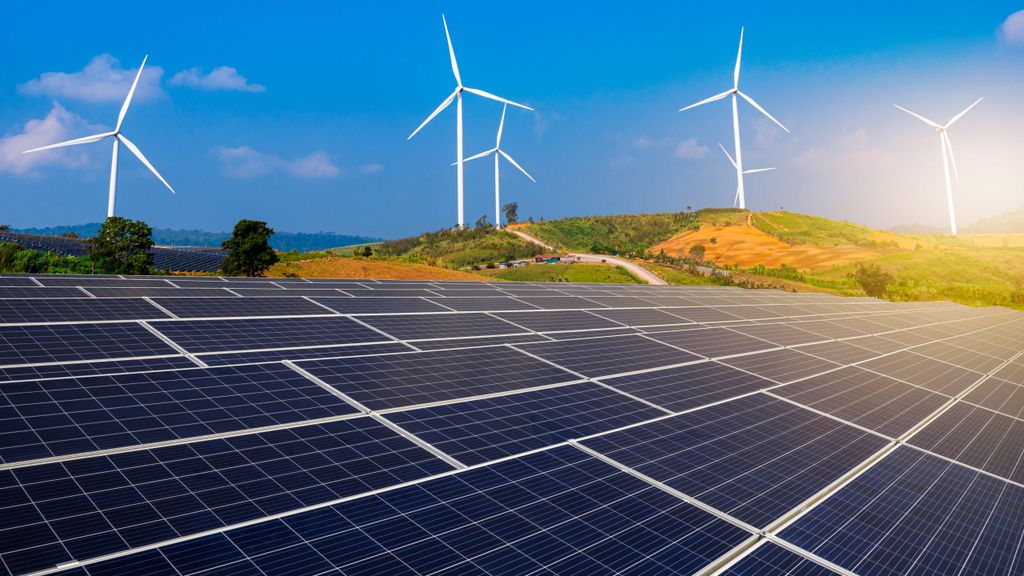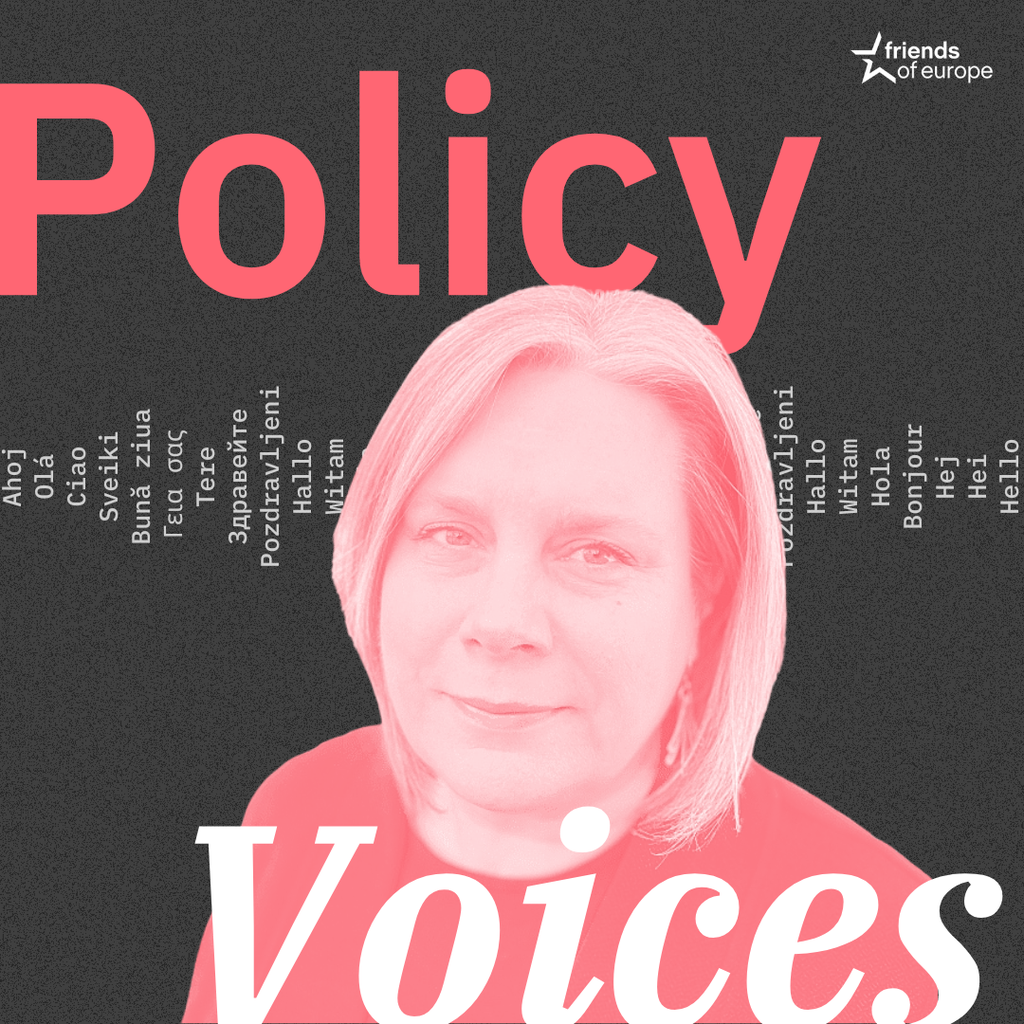A bold vision for a climate-neutral and competitive Europe
Next event In person & livestreamed

- Area of Expertise
- Climate, Energy & Natural Resources

Senior Lecturer at the University of Exeter Business School and 2015-2016 European Young Leader (EYL40)
Last December, Europe’s top four economies ‒ Britain, France, Italy, and Germany ‒ suffered steep drops in industrial output as a result of reduced demand from major emerging economies. This prompted forecasters to lower their economic growth expectations across the continent for 2016. Industry, then, is an area where Europe may benefit from a policy shift, or at least a sharp change in focus.
The EU’s former ambassador to the US John Bruton recently identified four areas pressingly in need of improvement across the union. The first was the continent’s ageing demographic. With a substantially reduced workforce supporting a growing older population, Bruton likened Europeans to elderly drivers: fearful and risk averse. The second was Europe’s reduced global influence. Although most European governments continue to believe that they dictate the global agenda, Europe has become a very small continent in terms of economic and social influence. Europe also suffers from an overdependence on established technologies. Compared to the US, European investors do not look as favourably on new and potentially disruptive technologies. Finally, Europeans fail to carefully assess their risks and priorities, allowing themselves to be limited by distractions that hinder progress instead of deploying evidence-based policies.
There is a common argument that increased industrial output can provide a useful economic buffer in harsh economic times. For example, European countries with higher shares of industry in their GDP were less affected by the recent financial crisis. Trends like this have prompted a revisiting of controversial selective industrial policies; in other words, those that promote particular sectors to strategically increase industrial output where it matters most. Certain selective policies, as German economist Rainer Walz has observed, are also becoming aligned with global challenges. For instance, industrial policy supporting the emergence of a greener economy ‒ green industrial policy ‒ aims to contribute to both the reaching of worldwide environmental goals as well as increased economic growth locally. Together, these policies may present an answer to Bruton’s most pressing concerns.
“Europeans allow themselves
Europeans allow themselves to be limited by distractions that hinder progress instead of deploying evidence-based policies
At continental level, the EU employs a number of instruments to guide what at present is its indirect green industrial policy. These include funding R&D and innovation, with green policy instruments represented in the Horizon 2020 framework with environment sub-sections on water, waste and resources; energy and transport; and the bioeconomy within food production. Green industrial policy is also increasingly prominent within the EU’s Structural and Investments Funds. The Commission’s Communication on the Industrial Renaissance has indicated that priorities should be set according to selective ‘smart specialisation’, including bio-based products, clean vehicles and vessels, sustainable construction and raw materials, and smart grids. How this translates into the EU’s budget for 2020 remains to be seen, but it has the potential to directly mitigate immediate concerns about the continent’s aversion to risk, at least within industry.
The EU should also continue to foster coordination and cooperation, in particular through European Innovation Partnerships (EIPs) and Technology Platforms. These themed programmes aim to synchronise investments and speed up the delivery of pilot projects, among other things. They are particularly effective because they target areas of strategic priority such as in the development of smart cities or improving activity levels of the elderly. Water is a particularly high-impact EIP area; a multi-sector call for commitments on accelerating innovation in the sector was recently announced, including the promotion of reuse and recycling, efficient urban planning and tighter adherence to the Sustainable Development Goals.
Europe no longer dictates the global agenda
But a shift in industrial policy would of course be impossible without stimulating demand. Achieving environmental targets whilst increasing the demand for green technologies is one of the key unsolved challenges in Europe’s industrial renaissance. It has been attempted in a number of member states, including Germany or Spain, through government subsidies for investments in green technologies such as renewable energy. These have aimed to achieve a critical level of demand so that low-emissions technologies – solar or wind – could be economically viable in the longer term. Such top-down intervention on renewables, which receive annual subsidies of $120bn globally, is controversial and has proven economically and politically costly. Yet the need for these subsidies may disappear once fossil fuel prices are adjusted to reflect the full cost of their impacts. The IMF recently estimated fossil fuel subsidies in Europe alone to be €330bn per year.
The demand for green technologies can also be increased by encouraging the proliferation of dedicated services such as contractors, development service providers, project developers or insurers. In Germany, environmental technology and resource efficiency services account for 54% of the total green technology market, assuming a wide variety of functions that collectively accelerate the transformation to a green economy. The growth of this sector can be encouraged by states through tax benefits and the elimination of administrative hurdles, but also through investment in relevant education and training.
One of the most comprehensive existing strategies for stimulating demand and supplying green technologies is the European Eco-Innovation Action Plan (EcoAP), which harnesses the EU’s most important instruments within its action framework to guide regulation, standardisation and R&D support. It crucially emphasises the role and national interests of member states in the design of green industrial policies. But at present, disagreement over nuclear power isn’t showing the action plan in a good light. To start on a better footing, future actions should tactfully choose areas of agreement by way of a vast evidence base, with stakeholders encouraged to keep in mind that Europe no longer dictates the global agenda.
The potential contribution of science to a greener industrial policy has never been more important
As a former scientific researcher with a humanities background, I believe scientists should be offered greater participation in international policymaking and diplomatic affairs. This form of mitigation, known as science diplomacy, is still a budding field, but has the potential to inform policy objectives, facilitate international science cooperation and improve international relations. Though the concept is not entirely new, in a world of increasing scientific and technical complexity, and in which policy is more reliant on rigorous evidence, the potential contribution of science to a greener industrial policy has never been more important.
As Europe ages and the continent’s global role diminishes, policymakers have shown themselves as risk averse. Green industrial policy, despite the widely recognised shortcomings of selective industrial policies, may represent a way for increased economic growth while contributing to the attainment of environmental goals that are both globally relevant and a way for Europe to renew its leadership.
Next event In person & livestreamed

Past event In person & livestreamed

Past event In person & livestreamed

Past event In person & Livestreamed





Stay informed
We use cookies and similar technologies to adjust your preferences, analyze traffic and measure the effectiveness of our campaigns. Learn more about our privacy policy.